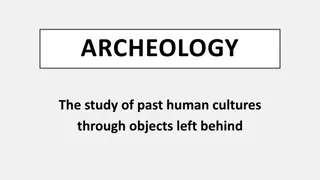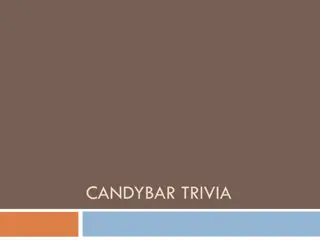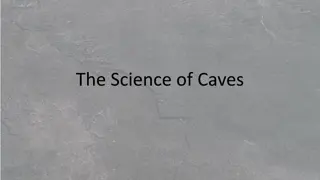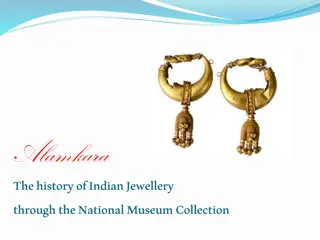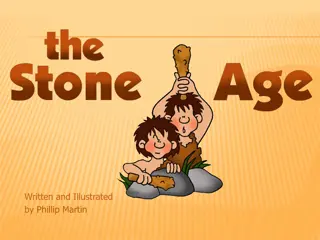Unveiling the Secrets of Otzi the Iceman: A Fascinating Journey Back in Time
Discovered perfectly preserved in a glacier, Otzi the Iceman provides a window into the past with details on his physical appearance, health concerns, clothing, and more. Learn about this Neolithic man who lived over 5,000 years ago.
Download Presentation

Please find below an Image/Link to download the presentation.
The content on the website is provided AS IS for your information and personal use only. It may not be sold, licensed, or shared on other websites without obtaining consent from the author. Download presentation by click this link. If you encounter any issues during the download, it is possible that the publisher has removed the file from their server.
E N D
Presentation Transcript
The Discovery The Discovery On September 19th1991, German hikers Erika and Helmut Simon discovered a human corpse in a melting glacier while they were hiking in the Alps near the border between Italy and Austria. Because he was frozen in a crevasse (crack), his body was perfectly preserved by the glacier in which he was found, instead of being crushed by the glacier. This human body (later known as Otzi the Iceman) lived during the late Neolithic Era, over 5,000 years ago!
Otzis Physical Appearance Otzi s Physical Appearance Since tzi is a wet mummy and his tissue, bones and organs are well preserved, numerous examinations have been carried out on him to learn more about his state of health when he was alive. A few key facts: Age: Examination of tzi s femur (thigh bone) put his likely age to be around 45. Height: The mummy is just over 5 feet in length. That means in real life, tzi must have been about 5 feet 4 inches tall, which was just below average for that time period. Weight: The mummy weighs approximately 29 pounds. So in real life, he would have weighed about 134 pounds. He was thin, but muscular.
A Closer Look at Otzi A Closer Look at Otzi Nails: tzi s fingernails and toenails fell off as he decomposed. During excavations, one fingernail and two toenails were found. Horizontal grooves were observed on the fingernail an indication of great physical stress. Hair: A few clumps of hair were found around the body, indicating that tzi had dark, medium-long hair which he wore loose. Traces of arsenic (a poisonous element) were found in his hair, leading to the conclusion that tzi was sometimes near where metal ores were melted.
Health Concerns Health Concerns Bones and joints: X-rays showed significant wear and tear of joints, including the hips, shoulders, knees and spine. His 12th pair of ribs were missing a rare genetic condition. tzi broke several bones during his lifetime, including several ribs and his nose. Parasites and pathogens: Two human fleas were found in tzi s clothing. Scientists also found the oldest evidence of Lyme Disease, an infectious disease transmitted by ticks, in tzi s DNA. The eggs of whipworm, an irritating intestinal parasite, were also found in his digestive tract.
Otzis Clothing Otzi s Clothing tzi was fully clothed when he died. His clothing was damaged by wind and weather when the ice melted and was also badly affected when his body was recovered. His clothing included a coat, leggings, shoes, a hat, and a belt. They were made from leather, animal fur and braided grass. They were stitched together with animal tendons and grass fibers. No wool or woven cloth was found. Unfortunately, there are no comparable items from tzi s era, so we don t know whether he was wearing traditional everyday clothing, or special clothing. Either way, tzi was well prepared for life in the wilderness. His clothing protected him from cold and wet weather.
Otzis Tools Otzi s Tools tzi was well equipped to master the challenges of his alpine environment. He had a longbow and arrows, and an animal skin quiver to hold his arrows. He also had a small knife made of flint (hard stone). The most important tool found with Otzi was his copper axe. tzi s axe was well intact and is the only one of its kind in the world. Signs of wear show that the axe had been frequently used. The copper used in the blade came from Central Italy. Otzi s axe was so important because it proved that he lived during the copper age which occurred around 3000 B.C. Status symbol, tool or weapon? Around 3000 BC, high-ranking men owned a copper axe, which was often buried with them. A copper axe could be used for woodworking and fallen trees. It was also a powerful close-combat weapon. Did Otzi use his axe as a status symbol, a weapon, or a tool? It still remains a mystery!
Otzis Death Otzi s Death At first, it was thought tzi had died by accident in the mountains, or from hypothermia. It was only in 2001 that an X-ray revealed a flint arrowhead in his left shoulder, after which a wound was discovered in his back. The arrow cut through an important artery, indicating that tzi bled to death within a matter of minutes. tzi also suffered a severe head injury probably at the same time as the arrow wound. This could have been caused by a fall, or by an attack. Archaeologists also found a deep cut on his hand. Further analysis of his stomach and intestines make researchers think his last few days were hectic and violent. A reconstructed model of Otzi
So who was Otzi? So who was Otzi? The question of tzi s role in society is still unknown. The copper axe clearly identifies him as a man of status. Was he a tribal leader? Since he was found on a main route along an alpine ridge, some claim he was a trader. But he didn t have anything with him that could be identified as trading goods. He was certainly a hunter, but this was a daily occupation of most people in the Alps at the time.. Was he a fugitive (runaway)? The fact that he had repaired his equipment in a makeshift manner indicates that he hadn t lived in a settlement for some time.
















